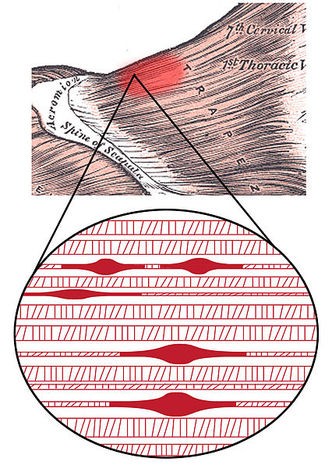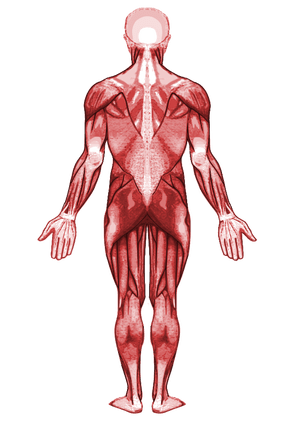MYOFASCIAL PAIN SYNDROMES
In an article (
Myofascial Pain Syndromes) written for the latest edition of Practical Pain Management — a medical journal for physicians that run pain clinics — Nikki Kean tells us how common MPS is. “Myofascial pain syndromes (MPS) are the most common diagnosis seen in pain clinics, accounting for approximately 85% of cases.” Stop and read between the lines for a moment and grasp what she is saying here. We all know that pain doctors rarely if ever “fix” anything. They are, by the very nature of their practices, masking symptoms with a wide array of drugs and procedures (RFA, BOTOX, PRP, etc). For patients with Myofascial Pain Syndromes — the vast majority of their patient load — this typically means giving them HARDCORE DRUGS.Dr. Harden is the source that Keen uses to write her paper, and his credentials are impeccable. He is an
Associate Professor at Northwestern University’s Pain Management, Rehabilitation, and Physical Therapy Center, as well as being the Medical Director, for the Center for Pain Studies of Chicago’s Rehabilitation Institute. Dr. Harden is a pain doctor.Keen writes that, “Dr. Harden does not follow any specific guidelines, but rather lets the patient’s symptoms guide therapy. “Medicine is an art, and it requires a hands-on approach. The most effective therapy for MPS is not “A” therapy but a combination of interventions….” What are these “interventions“? Unfortunately, he, like most pain doctors, uses CORTICOSTEROID INJECTIONS. And although he toes the old prejudicial medical lines and wants it done by osteopaths, MANIPULATION is at the top of his list. So are, “locally administered electromagnetic techniques“. While this could mean any number of things, the “technique” that comes immediately to mind would be COLD LASER. Interestingly enough, this same issue of PPM ran a story called Ten Must-Have Devices for Your Practice. Up near the top was Therapeutic Laser.
Dr. Harden then makes a remarkable statement. He says, “Treatment should be targeted at the pro-inflammatory mediators causing muscle bundling and trigger points“. What are pro-inflammatory mediators? If you want to see a couple lists of these mediators and the health problems they are associated with, just go HERE and HERE. If you want to read more about INFLAMMATION in general, just follow this link.
I am not sure how Dr. Harden is addressing this issue beyond prescribing people standard fare (Corticosteroids mentioned above, or NSAIDS (NON-STEROIDAL ANTI-INFLAMMATORY MEDICATIONS). The thing is, we don’t have to reinvent the wheel. Two years ago today, Functional Neurologist, Chiropractor, and Nutritional Expert, Dr. David Seaman wrote an article for PPM (HERE) called An Anti-inflammatory Diet For Pain Patients. In this article he stated, “Eating a pro-inflammatory diet over a long period of time increases one’s risk of developing heart disease, diabetes, and pain syndromes. Switching to an anti-inflammatory diet can help reverse some of these conditions and reduce pain and inflammation.” Wow. You mean to tell me that what you eat can make a difference in health and CHRONIC PAIN SYNDROMES? What a novel idea! Not sure when this is going to become the Standard of Care, but the seeds are slowly being planted. The process, however, is exceedingly slow because Big Pharma doesn’t want pain patients getting better. They want chronically sick patients that they can provide huge amounts of drugs for over the course of a long lifetime. This is exactly what is happening as people are living longer, but in misery (HERE).
If you are looking for restoration of function and relief from the pain caused by Myofascial Problems and the SCAR TISSUE associated with many of them, give us a call. I might very well be able to provide a solution that no one else has offered yet. To better see what I am talking about, take a moment to watch a few of our VIDEO TESTIMONIALS.


